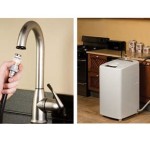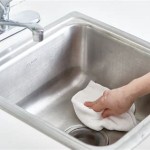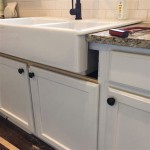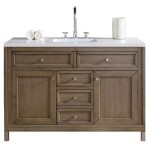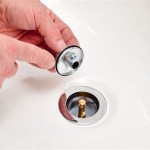Hose Connector to Kitchen Sink: A Comprehensive Guide
Connecting a hose to a kitchen sink can be a practical solution for various tasks, ranging from filling large containers to washing items that are too cumbersome for the sink itself. However, the process requires understanding the different types of connectors, adapting to varying faucet designs, and observing proper plumbing techniques to ensure a leak-proof and efficient connection. This article provides a comprehensive overview of how to connect a hose to a kitchen sink, covering the necessary components, installation procedures, and crucial considerations for maintaining a reliable setup.
The need to connect a hose to a kitchen sink often arises when outdoor water sources are unavailable or inconvenient. For example, filling a large aquarium, inflating a swimming pool, or washing a pet indoors might necessitate using the kitchen sink as a primary water source. In such situations, a direct connection offers a controlled and accessible water supply. Furthermore, certain cleaning tasks, such as rinsing large equipment or removing stubborn stains from outdoor furniture, can be more easily managed with a hose attached to the kitchen sink.
Several factors contribute to the successful connection of a hose to a kitchen sink. These include the type of faucet present, the availability of appropriate adapters, and the water pressure within the plumbing system. A mismatched connector or improperly tightened fittings can lead to leaks, water damage, and inefficient water usage. Therefore, a thorough understanding of the components and procedures involved is essential for a safe and effective outcome.
Identifying Faucet Types and Connector Compatibility
Kitchen faucets come in a variety of designs, each requiring a specific type of connector for hose attachment. Understanding these distinctions is crucial for selecting the right adapter. The most common types of kitchen faucets include standard faucets with threaded spouts, pull-down or pull-out faucets with integrated sprayers, and bar faucets, which are typically smaller and have a simpler design. Each of these faucet types presents unique challenges and opportunities when connecting a hose.
Standard faucets with threaded spouts are generally the easiest to connect to a hose. These faucets often have a removable aerator, which can be unscrewed to reveal threads compatible with standard hose connectors. Universal faucet adapters are readily available that can screw onto these threads, providing a secure connection point for a garden hose or other types of hoses. These adapters typically feature a built-in backflow preventer to prevent contaminated water from flowing back into the potable water supply.
Pull-down or pull-out faucets pose a greater challenge because their spray heads are connected to the faucet body via a flexible hose and retraction mechanism. Directly attaching a hose to the spray head is usually not feasible due to the complexity of the connection and the potential for damaging the retraction system. Instead, the connection must be made at the point where the flexible hose connects to the main faucet body, typically located under the sink. This often requires disconnecting the existing hose and inserting a T-connector or specialized adapter to divert water to the external hose.
Bar faucets, due to their smaller size and simpler design, may not always be suitable for direct hose connection. However, if the bar faucet has a threaded spout, a universal faucet adapter can be used. Alternatively, a sink faucet diverter valve can be installed on the water supply lines under the sink. This diverter valve allows the user to switch between the faucet and the hose connection as needed.
Properly identifying the faucet type is the first step. Next, it is necessary to measure the spout diameter or the thread size to ensure the adapter is compatible. Attempting to force an incompatible adapter can damage the faucet or create leaks. Accurate measurements and knowledge of thread standards are key to selecting the right connector.
Selecting and Installing the Appropriate Connector
A variety of connectors are available for attaching a hose to a kitchen sink, each designed for specific faucet types and hose sizes. Universal faucet adapters, hose bib adapters, and sink faucet diverter valves are among the most common options. The choice of connector depends on the faucet design, the desired level of permanence, and the intended use of the hose connection.
Universal faucet adapters are designed to fit a wide range of standard faucets with threaded spouts. These adapters typically consist of a rubber sleeve that fits over the faucet spout and a clamp that tightens the sleeve, creating a secure seal. They often include a threaded outlet for attaching a standard garden hose. However, the universality of these adapters means that they may not provide the most secure connection for all faucet types. They are more suitable for temporary connections and lighter use.
Hose bib adapters, also known as sillcock adapters, are designed to connect to threaded faucet spouts or to water supply lines under the sink. These adapters typically have a male or female threaded connection that matches the standard hose thread size. They are more robust than universal faucet adapters and provide a more reliable connection, especially when used with appropriate Teflon tape or pipe sealant.
Sink faucet diverter valves are installed on the water supply lines under the sink and allow the user to switch between the faucet and the hose connection. These valves are particularly useful for pull-down or pull-out faucets where direct connection to the spray head is not feasible. They provide a convenient and permanent solution for accessing a hose connection without affecting the normal operation of the faucet.
Installing the connector typically involves several steps. First, the aerator or spray head (if applicable) must be removed from the faucet. Then, the adapter is attached to the faucet spout or water supply line, ensuring a tight and leak-proof connection. Teflon tape or pipe sealant should be used on threaded connections to prevent leaks. Finally, the hose is connected to the adapter, and the water supply is turned on to test the connection for leaks. Any leaks should be addressed immediately by tightening the connections or reapplying Teflon tape.
Ensuring a Safe and Leak-Proof Connection
Achieving a safe and leak-proof connection between a hose and a kitchen sink requires careful attention to detail and adherence to basic plumbing principles. Proper installation, the use of appropriate sealing materials, and regular inspection are crucial for preventing water damage and ensuring the longevity of the connection.
Before beginning the installation, it is essential to turn off the water supply to the faucet. This can be done by closing the shut-off valves located under the sink. Failure to do so can result in a significant water leak and potential damage to the surrounding area. The shut-off valves should be tested periodically to ensure they are functioning correctly. If the shut-off valves are corroded or difficult to turn, they should be replaced before attempting any plumbing work.
Teflon tape or pipe sealant should be used on all threaded connections to create a watertight seal. Teflon tape is a thin, white tape that is wrapped around the threads of a pipe or fitting. Pipe sealant is a paste or liquid that is applied to the threads. Both materials help to fill any gaps between the threads and prevent water from leaking. When using Teflon tape, it should be wrapped in the direction of the thread, typically clockwise, to prevent it from unraveling as the fitting is tightened.
After the connector and hose are installed, the water supply should be turned on slowly to check for leaks. Begin with a low water pressure and gradually increase it to the normal operating level. Inspect all connections for any signs of water seepage. If a leak is detected, turn off the water supply immediately and tighten the connections. If tightening the connections does not resolve the leak, the Teflon tape or pipe sealant may need to be reapplied. In some cases, the connector or hose may be defective and need to be replaced.
Regular inspection of the hose connection is essential for preventing leaks and water damage. The connections should be checked periodically for signs of corrosion, wear, or damage. The hose should be inspected for cracks, kinks, or bulges. Any damaged components should be replaced immediately. It is also important to ensure that the hose is not subjected to excessive pressure or strain, as this can lead to leaks or damage. Using a pressure regulator can help to prevent over-pressurization and protect the hose and connections.
By carefully selecting the appropriate connector, following proper installation procedures, and conducting regular inspections, it is possible to establish a safe, reliable, and leak-proof connection between a hose and a kitchen sink. This simple modification can provide a convenient and accessible water supply for a variety of tasks, enhancing the functionality and versatility of the kitchen.

Universal To Garden Hose Pipe Connector Kitchen Bathroom Sink Water Tap Adapter

Kitchen Sink Dish Basin Adapter Reducer Drain Pipe Joint Thread Hose Connector Wal Com

Danco Faucet Pull Out Spray Hose For Kitchen Pullout Heads 10912 The Home

Neoperl Dual Thread By 3 4 In Brass Mgh Large Coupler And Fitting 37 0297 98

Sink Faucet Quick Connector Adapter For Connection Shower Hose

Easy Turn 2 Way Faucet Adapter

Bosisa Kitchen Sink Dish Basin Adapter Reducer Drain Pipe Joint Thread Hose Connector Wal Com

16 Faucet Supply Line Connector With 1 2 Fip X 3 8 Comp Brass Nut 304 Braided Stainless Steel Kitchen Hose For Sink 10 Pack

Kitchen Replacement Faucet Hose Quick Connect Pull Out Nylon Tube

Hose Adapter Sink Round Seal Gasket Reducer For Kitchen Drain Bathroom Attachment Threaded Connector Durable Rubber
